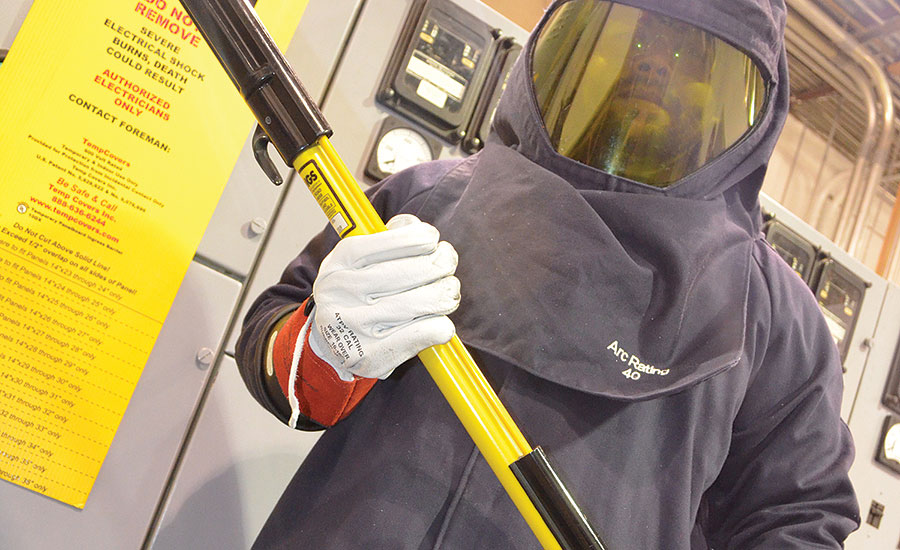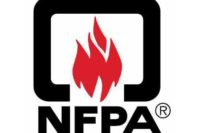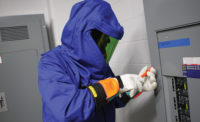NFPA 70E: A work in progress
Each new edition further improves electrical safety in the workplace

NFPA 70E®, Standard for Electrical Safety in the Workplace, is an indispensable, ongoing work in progress. Approximately every three years, it is updated to incorporate the latest electrical safety research, risks, work practices, electrical designs, and personal protective equipment (PPE) to reduce the number of deaths and injuries caused by shock, electrocution, arc flash, arc blasts and fires.
Much is learned every year. When the National Fire Protection Association (NFPA) initiated the voluntary standard at OSHA’s request in 1979, its first edition only addressed electrical shock. It wasn’t until the 1995 edition that arc flash hazards were recognized, and numerous workplace safety requirements have since been added. Each new edition succeeds in further improving electrical safety in the workplace and makes the prior version obsolete.
As the safety standard evolves, so must the companies and electrical workers that use it. The 10th and latest release, NFPA 70E 2015, contains some significant differences from its 2012 predecessor. It is essential to clearly understand these changes and why they matter in order to remain compliant with OSHA, avoid compromising lives and safety, reduce liability, and prevent unexpected and costly downtime. Safety consulting and engineering services can be called upon to help expedite and refine safety education and compliance initiatives.
A review of changes
The new edition strives to ensure a safer workplace and clarify the responsibilities of employees and employers by making the following major changes, in addition to extensive minor adjustments.
- Users are made more aware of the devastating risk of failure and loss caused by shock, arc flash, and arc blast hazards by replacing the phrase “hazard analysis” with “risk assessment” throughout the standard.
- The risk assessment process is defined as identifying the hazards, estimating the potential severity of injury or damage to health, estimating the likelihood of the injury occurrence or damage to health, and determining if protective measures are required.
- Maintenance status is now an integral part of the risk assessment.
- The electrical safety program must now include maintenance on electrical equipment as a primary element.
- The responsibility for proper installation and maintenance is assigned to the equipment owner or the owner’s designated representative.
- Clarification was made that the risk assessment is required, not the incident energy analysis, which is one component of the risk assessment.
- The short-circuit current and clearing time of the over-current protective device must be known for an incident energy analysis.
- Hazard/risk category (HRC) tables have been replaced with a new task-based table that clarifies selection methods for arc flash PPE, and all references to HRC have been replaced with the term “arc flash PPE category.” This will force a culture change because HRC has become institutionalized terminology in the industry.
Why do these changes matter?
NFPA 70E provides instructions on how to comply with OSHA’s electrical safety regulations. According to OSHA, there are approximately 350 electrical-related fatalities each year. OSHA is able to cite companies for non-compliance with the consensus standard when an electrical accident causes a serious injury or death, even though NFPA 70E is considered voluntary rather than a Federal regulation. Certain states with more restrictive occupational health and safety laws require NFPA 70E compliance.
NFPA makes it the responsibility of the employer to educate employees on safety standards, including qualified and unqualified electrical workers. In fact, a plant manager can be held criminally responsible for a worker’s injury if the worker did not have proper safety training. Personnel in any industry who work on or around AC or DC voltages of 50 volts or more, or are responsible for safety in the workplace, should receive NFPA 70E 2015 training.
In particular, the new standard’s risk assessment process alters the paradigm by broadening the scope of employees requiring safety education. Employers must assess generally recognized arc flash and shock hazards in the workplace and make provisions for protection from those hazards, and all employees must be made aware of the potential hazards.
“The 2015 edition requires an arc flash risk assessment to determine whether an arc flash hazard exists. If it exists, the employer must determine the risk to employees and the required safe work practices, arc flash boundary, and PPE,” explains Dennis Neitzel, a principal committee member and special expert for the NFPA 70E standard and Director Emeritus at AVO Training Institute. “Similarly, shock risk assessments are required to determine the voltage, shock boundaries, and PPE. These new skills must be quickly trained and implemented.”
All employees who are exposed to electrical hazards where the risk has not been reduced to a safe level (with no exposed energized conductors or parts of equipment and the equipment is essentially stagnant) require risk and avoidance training, according to the new standard. “The reality is, covers are removed, equipment doors are opened, and most equipment is operated manually or automatically on a regular basis,” says Neitzel. “Even the process of establishing an electrically safe work condition puts the employee at risk.”
Ultimately, all employees must be trained, not just electricians. “Anyone in close proximity is potentially at risk of serious injury or death from arc flash burns, whether it’s an operator, mechanic, janitor, office worker, or someone plugging into an electrical outlet,” he adds. “Everyone must be trained to identify, understand, and avoid the electrical hazards and risk of injury associated with the tasks that they are required to perform.”
Neitzel recommends that a job/task analysis and task hazard analysis with shock and arc flash risk assessments be conducted for each employee. The exposure or potential exposure to electrical hazards should be recorded in the employee’s job description and their training requirements determined accordingly.
Finally, employers must certify that the hazard assessments were performed, and authorize energized electrical work permits as needed. Companies must be prepared to share these records if requested during an OSHA inspection.
Compliance assistance
OSHA requires employers to document and implement an electrical safety program that addresses exposure to all existing hazards, and those likely to exist, in the workplace. The program must be published and available to all employees who might be exposed to the hazards. OSHA also has specific equipment labeling requirements. Developing, documenting, training and implementing safety programs and procedures can be expedited with the aid of third-party experts in electrical safety and associated regulations.
An invaluable resource
For more than 35 years, NFPA 70E has continuously improved safe workplace practices, but the standard remains a work in progress.
Although each new edition requires new training and implementation efforts, this voluntary how-to guide for OSHA compliance plays an invaluable role in helping to mitigate electrical safety hazards in the workplace, protect human lives and safety, and keep businesses up and running.
Looking for a reprint of this article?
From high-res PDFs to custom plaques, order your copy today!





